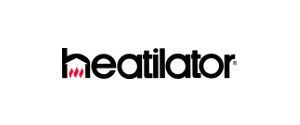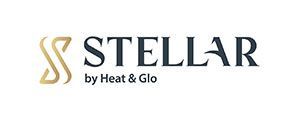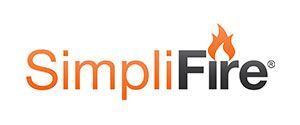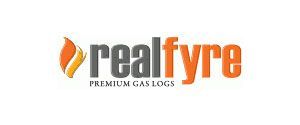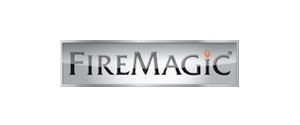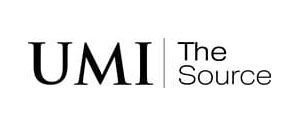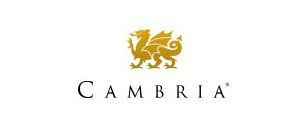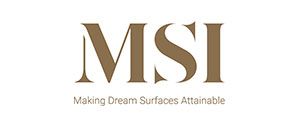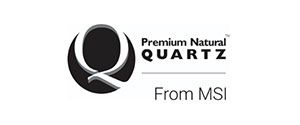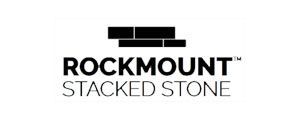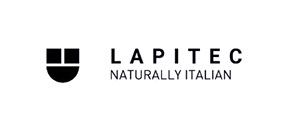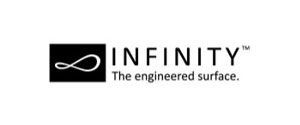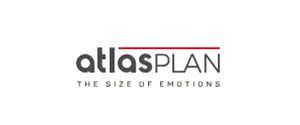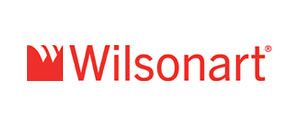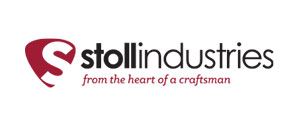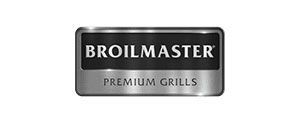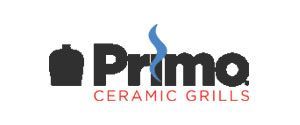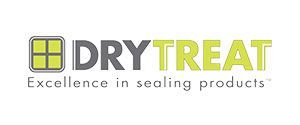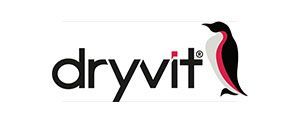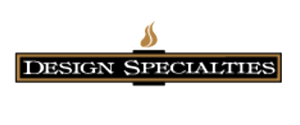Common Terminology Guide
A PLUS Fireplaces Granite And Marble Inc
- Bullet text
- Bullet text
- Bullet text
- Bullet text
- Bullet text
- Bullet text
- Bullet text
- Bullet text
- Bullet text
- Bullet text
Title or Question
Describe the item or answer the question so that site visitors who are interested get more information. You can emphasize this text with bullets, italics or bold, and add links.Title or Question
Describe the item or answer the question so that site visitors who are interested get more information. You can emphasize this text with bullets, italics or bold, and add links.Title or Question
Describe the item or answer the question so that site visitors who are interested get more information. You can emphasize this text with bullets, italics or bold, and add links.
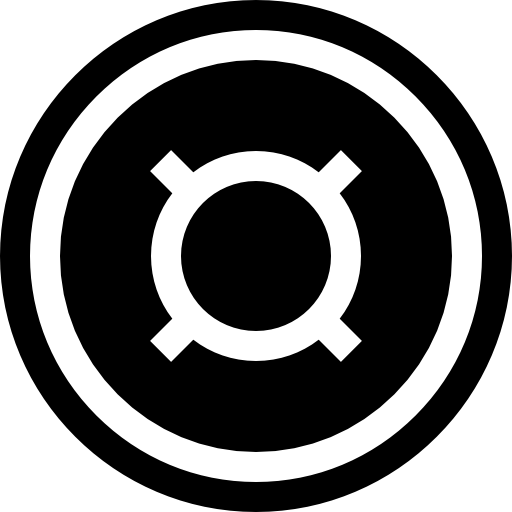
CP #1 Headline
CP #1 Body
CP #1 CTA Lead-in
Not valid with any other offers or promotions. Restrictions apply.
Must mention this coupon at the time of scheduling.
Title or Question
Describe the item or answer the question so that site visitors who are interested get more information. You can emphasize this text with bullets, italics or bold, and add links.Title or Question
Describe the item or answer the question so that site visitors who are interested get more information. You can emphasize this text with bullets, italics or bold, and add links.Title or Question
Describe the item or answer the question so that site visitors who are interested get more information. You can emphasize this text with bullets, italics or bold, and add links.
Gallery Heading H2
Communicating Effectively About Your Fireplace Needs
Often times, people say one thing and mean another when trying to communicate about issues or parts of a fireplace. In an effort to speak the same language, in relation to the fireplace industry, here are common fireplace terms like firebox, hearth, surround, mantel, and chimney, which describe main components and surrounding features of a fireplace system. Other important terms refer to the fuel source (like gas or wood), the mechanism for venting smoke (flue) vertically out of the home and finishing around the fireplace. Here's a more detailed breakdown:
Fireplace Surrounding Finishes:
Clearances
Refers to required distance needed for many items, including framing, venting, cap, mantel, ceiling, wall, hearth, TV and more. Your local code may require certain measurements of clearance between the floor and the hearth, the fireplace and the mantel and more. It’s important to know these when planning your fireplace so you have an accurate account of the space needed.
Combustibles
Materials made of, or surfaced with, wood, compressed paper, plant fibers, plastics or other materials that can ignite, melt or burn. Combustibility is a factor regardless of whether a material is “flame proofed” or not. Knowing the product’s clearances to combustibles will allow you to design the wall, integrating things like a mantel, television and other finishing materials like tile or wood siding, flooring, etc. safely.
Non-combustible
The character of a material that will not catch fire even when exposed to the high heat output of a fireplace that burns gas or wood. The heat of a fireplace is directed in front of and rises from the fireplace opening up the wall. It is normal for the wall to get very hot (170°-245°F). High heat producing fireplaces must be immediately surrounded (see surround and hearth) by non-combustible materials for safety and to conform to current building codes. See product specifications and/or manual.
Facings
Material used on the wall(s) around the fireplace, or behind a cast iron stove, to give it a finished look and protect the area from the high heat output.
Hearth
The non-combustible material on the floor area directly in front of the fireplace, often extending into the room 18”-24” or more in some cases (with vinyl or waterproof flooring), which protects the floor from high heat output, crackling/popping hot coals/embers or ash while burning.
Surround
The vertical non-combustible material around the fireplace opening on the wall, often decorative but always non-combustible meaning it can get very hot but will not catch fire. The surround should be able to withstand a prolonged high heat range of 170°-245°F directly above the fireplace front opening. Common surround materials can be tiles, marble, granite or porcelain slab material. Backing for a surround should also be non-combustible material such as cement board with full coverage setting material.
Mantel
A shelf-like piece installed above a fireplace burn area which serves to break the heat rising up the wall to start cooling down and take the brunt of the high heat protecting a TV or artwork above the fireplace. Mantels can be made of various materials, but there are necessary clearance stipulations to follow based on fireplace type and model. See product specs or manual. Mantel surrounds, which are 3-sided, including legs and a header all-in-one, are also available. The mantel is not required but highly recommended. Mantel projection (depth) refers to how far off the wall (into the room) is the mantel’s front edge.
Fireplace
A device of either metal or masonry construction open on at least one side, designed to contain a fire, fueled by either gas or wood or fire presentation by electric and LEDs only, that adds warmth and/or ambiance to a space. These can be for outdoor use, or for indoor use. Unlike a free-standing cast iron stove, a fireplace is built into a wall or other structure.
Factory Built Fireplace
A fireplace that is manufactured from metal for faster and easier installation. (a.k.a. Prefabricated Fireplace, Zero-Clearance Fireplace).
Masonry Fireplace
A fireplace that is constructed on site with stone, brick or block and mortar and are typically part of the homes structural design. These can be vented for use with wood or vented gas log sets or vent-free for use with vent-free gas log sets.
Stove (Cast Iron)
(For Heating, Not Cooking): A free-standing, compact heating appliance, normally on legs or a pedestal, visible from four sides and is not built into a wall. Stoves can be wood-burning, gas burning or even electric nowadays.
Common parts of the fireplace system
Chase
A structure that contains the fireplace, vent or most typically both, encloses the chimney (flue chamber) and/or fireplace vent penetrating the roof. Most chase structures run the entire length of the home vertically and past the roof line and seen above in an exterior finish to match the exterior walls of the home. A benefit of a direct-vent gas fireplace is that it can be contained in a horizontally run mini chase, large enough to contain the fireplace and horizontal vent cap, which offers a significant savings budget- and complexity-wise.
Chase Top (Cap)
A chase top, also called a chase pan or cover, is an enclosure on top of the chase where the chimney or vent run through. Like the cap, it helps to keep out water and other debris. To add architectural interest, chase tops are available in a range of decorative designs and materials, including stainless steel and copper.
Chimney
The vertical structure that vents smoke and exhaust gases (includes carbon monoxide a common byproduct from burning materials like wood or gas) from the firebox to the outside.
Venting
This refers to the vent pipe that is used to either move the exhaust to the exterior of the home or bring combustion air into the hearth appliance, or in some cases, both. Vent run refers to the length of venting required to exit the home.
Damper
A mechanism (often a valve or plate) typically found on the ceiling of the firebox that controls airflow from the fire allowing smoke and exhaust to vent up and out of the home. The damper should always be in the open position while burning to maintain clean indoor air quality.
Firebox
The actual interior chamber where the fire burns (firebed) at the bottom inside the home.
Flashing
A thin material (metal typ.) installed around the “seam” where your roof meets your ventilation pipe or chase cap to protect your home from moisture penetration.
Flue
A flue is a duct or pipe that runs up the inside of a chimney. It carries smoke, chemicals, and exhaust gases from a fireplace, furnace, water heater, boiler, or generator to the outdoors.
Interior panels
Also called the fireplace liner panels or refractory, can be made of glass, porcelain, FireBrick TM or molded cement mix for high heat tolerance. Some are designed to replicate the look of masonry brick while others, like reflective or fluted black glass, are suited for contemporary or transitional interiors.
Shroud
A tall cover on a chase cap that mostly hides the termination but still allows for air flow.
Spark Arrestor
A mechanical device that is the last section of the flue system that prevents the emission of flammable debris, like hot particles or sparks, from combustion sources, primarily to prevent fires. It's commonly used on fireplaces, and wood-burning stoves. Also known as a Round Top or Vertical Vent Termination. These allows for air flow out of the house so they are not water proof or critter proof.
Termination Cap
The cap at the end of the ventilation pipe run. Vertical termination cap refers to the end of vent run exiting the home through the roof. Horizontal termination cap refers to the end of vent run exiting out of the home through an exterior wall, such as in a direct vent system.
Terms related to the operation and “side effects” of a fireplace system
Back Draft: also known as Downdraft, Back Puffing or Spillage
A current of air (usually with exhaust and smoke) that flows backward down a chimney, pipe, etc. There can be multiple causes for this such as: not enough pressure or “negative pressure” or room air to force the exhaust from the fire all the way up and out of the flue system.
Carbon Monoxide
An odorless, colorless, tasteless poisonous gas produced by incomplete burning of carbon-based materials such as wood, coal, oil and gas.
Chimney Fire
Is a fire that ignites inside the chimney, typically fueled by creosote buildup. These fires can be dramatic, with loud noises and flames shooting from the chimney, or they can be slow-burning and go unnoticed, causing significant damage. Main causes of chimney fires is lack of regular cleaning, burning unseasoned or damp wood or processed composite logs and improper use such as burning fires too low with insufficient air or using the wrong type of fuel.
Creosote
A byproduct (also known as Soot) of wood burning, a flammable substance that can accumulate in the chimney and pose a fire hazard. It looks black or dark gray and should be cleaned out of the flue system regularly from using the fireplace. That process is called a chimney sweep.
Types of Gas Fireplaces (considered High Heat appliances)
Direct Vent (DV)
A technology specific to gas-burning fireplaces, inserts and stoves that has a sealed burn chamber, meaning 100 percent of the air needed for the fire comes from the outside, and 100 percent of the exhaust goes right back out. This style of venting, which Heat & Glo introduced to the industry in 1987, maintains indoor air quality (no smoke in the house!), doesn’t throw off your existing HVAC system and offers optimal efficiency. A direct vent pre-fabricated (factory built) fireplace can vent directly to the outside (either through the roof or an exterior wall*) through a coaxial (double wall) pipe.
Natural/B-Vent
A fireplace hybrid that vents vertically through a chimney and roof, but doesn’t require a tall (exterior chase above the roof) that burns only gas with faux wood logs using natural draft to exhaust combustion products. The added benefits of this system is an open front and hidden controls such as the valve bulk of the gas burner.
Vent-Free/Unvented/Non-vented (VF)
A fireplace designed to burn gas with faux logs that doesn’t require ventilation pipe such as a flue system. A vent-free firebox is designed to specifically take the high heat output of vent-free gas log sets. An odor is normal while using the system. Cracking open a window or door or both for fresh air exchange is highly recommended to avoid poor indoor air quality and possible buildup of carbon monoxide in the home.
Gas Insert
A gas-burning direct vent appliance designed to fit into an existing masonry wood-burning fireplace opening and vent outside the home. A new 2 way venting system is included with this product’s installation. A permit is required prior to installing this appliance in the state of Florida.
Gas Log Set
A gas log set for a fireplace is a supplemental system of artificial/faux logs, typically made of ceramic, refractory or fiber materials, designed to mimic the appearance of real wood logs and create a fire effect using natural or propane gas. These sets are placed in an existing fireplace opening (masonry or prefabricated) (vented or vent-free) and connected to a gas line, providing a clean-burning, convenient alternative to wood-burning fires often featuring remote control sets.
To further illustrate, a wood-burning fireplace is a complete system that a vented gas log set can be added combining the (2) systems. However, they remain independent in terms of servicing. A chimney sweep will not service a gas log set, and gas technicians will not provide a chimney sweep cleaning or inspection.
A gas log set is very different from a gas insert and does not require a permit if a gas line is already brought into the fireplace. There are (3) main parts to a complete gas log set: burner, valve and logs. Proper installation, spacing and general maintenance will help your system’s longevity. Ask us for an info form on requirements, how to measure properly, etc.
Gas Fireplace Parts or related terms
Ceramic Glass
Special glass that withstands temperatures up to 1400°F.
High Heat Tempered Glass
Glass treated to withstand temperatures up to 500°F.
Decorative Barrier Front
The metal trim (like a picture frame) that goes on the front face of a pre-fab gas fireplace to cover the mechanical areas of the firebox. An integrated firm screen panel in the center of the front trim protects homeowners from the very hot radiant heat of the tempered or ceramic glass between the front trim and the flames. The front trim must remain removable in order to access, clean and service the fireplace and should not be overlapped by other materials such as the surround.
Ember bed
To mimic the burned-down look of the ashes and embers of a real wood fire, some brands of gas fireplaces offer LED or halogen lights at the base of firebox. You may like this option if you’re interested in adding ambiance to your space, without running the actual fireplace flames or at a low setting (low heat), as they can be operated independently.
Heat Management Kit
An additional optional venting solution to control where you want to redirect a percentage of the heat to enjoy a beautiful fire throughout the year. Move warmth to other areas of the home (even outside) or place your TV or artwork right over the fireplace. Passive heat management uses the natural rise of the heat to spill out above the TV or on the sides of the same build-out into the room. Heat Zone redirects some of the warmth into a nearby adjacent room versus Powerflow TM and Heat Out management kits will redirect some of the heat outside.
Ignition System
The mechanism that initiates the combustion process, either manually or electronically.
Electronic Ignition Systems
An ignition system that requires an external power source to operate such as hardwired or outlet electrical supply. (ex. DSI, IPI, HSI)
Standing Pilot Ignition
Term for ignition systems that generate their own power to operate. (See Manual Gas Valves and Millivolt Gas Valves)
Main Burner
The component that delivers gas to the area where the flame is created.
Manual Gas Valve
Standing Pilot systems that use a thermocouple to allow gas flow to pilot and allow gas to main burner to be manually turned on and off.
Media
Glass, stones, logs, lava rocks and ember material that sit on top of the fireplace gas burner or LED lights (for electric fireplaces).
Oxygen Depletion Sensor (ODS)
A safety device in vent-free fireplaces that shuts off the gas if the oxygen level in the room drops too low.
Pilot Light
A small flame used to ignite the gas at the main burner.
Remote control/Receiver system
Control all the features of your gas fireplace—from flame height to fan speed and more—with a simple remote control buttons. Safety features include a child lock and timer mode to enjoy your fireplace with peace of mind. Each hand-held remote uses batteries to power it and has wireless connection to a receiver inside the appliance. The receiver may be hardwired or use batteries for power. The receiver is designed to “receive” signals and convert into commands to be executed by another device. Sometimes other devices may give off the same signals interfering with the appliances operation. Changing one of the products signal frequency should correct the cross signaling.
Safety Shut-off Key Valve
A safety shut-off key valve is a type of valve, often used with fire pits or gas products, that controls the flow of gas using a key-operated mechanism. It's a “T” in the gas line to an interior wall surface that allows a homeowner the ability to shut off the gas supply in case of emergency or extended vacations. In case of potential remote control malfunction, it’s a safe way for a homeowner to starve the system of gas forcing it to shut off while still maintaining gas supply to other gas appliances.
Common Countertop Terminology explained
Common countertop terminology includes various materials like granite, quartz, marble, butcher block, laminate, and stainless steel, as well as terms describing their features and installation. There are natural stones carved out of the earth from mountains and stone quarries. Other man-made or engineered materials are mixed and formed in a large industrial factory. Both are cut from giant blocks and ground smooth to varying degrees. Materials for countertops and/or wall surfaces are cultivated from all over the world and distributed likewise in large shipping containers.
Granite
A natural stone known for its durability and unique patterns. Granite has characteristics of being very dense, high heat resistant indoors and outdoors, and can have small chips & knicks repaired. Common thickness in today’s market is 3 cm (1-1/4”) thick.
Marble
A natural metamorphic rock, prized for its veining and elegance, but can be more brittle or soft, prone to being scratched or etched easily. Mable can require more regular maintenance. It is fairly high heat resistant and can be used as a fireplace surround. Marble is generally not durable for high use countertop areas. Common thickness in today’s market is 3 cm (1-1/4”) and 2 cm (3/4”) thick.
Quartzite
A natural stone, often prized for its uniqueness and very hard density. Quartzite may look similar to marble with veining and crystals but are more rare and denser meaning harder to cut through and fabricate. It may often be backlit and is gaining popularity for this look. However, it comes with a significantly higher price compared to all of the other countertop material options.
Quartz
An engineered (man-made) slab material made of binding agents such as resins, colorants and natural stone industry by-products or silica. Quartz has a perfectly smooth, non-porous surface and wide range of colors and patterns often mimicking the look of high-end expensive marbles and quartzite at a more affordable price point and durability in some aspects. A down fall to quartz is it is not high heat resistant like the natural stones are and should never be used outside.
Porcelain Slabs
Large-format, approx. size: 125” x 63” x 1.2cm (.472” thick), man-made of refined clay and minerals, known for their exceptional durability and low porosity. They are created by firing a mixture of materials at extremely high temperatures, resulting in a virtually non-porous, stain-resistant, and heat-resistant surface. Porcelain slabs are versatile, often used for countertops, wall cladding, and even outdoor surfaces, and can mimic the look of natural stone, wood, or other materials.
Backsplash
The vertical area of the wall between the countertop and upper cabinets or venthood or wall-mounted microwave. Also referred to as the type of material used in this area of wall to protect the wall over time. This can be of varying heights, thickness and materials to match or contrast the countertops. Full height backsplash is the entire height between the countertop and whatever is above it, such as upper cabinets, venthood, microwave or shelving.
Edge Detail
The profile or shape of the countertop's exposed edges (not against a wall), such as flat polished or eased, half bullnose, quarter bevel or pencil round. Higher end edges may cost extra by the linear foot and include: waterfall edge (extra material needed for this one), euro bevel, demi-bullnose, shark-nose and ogee.
Honed Finish
A matte or satin finish on stone countertops, as opposed to a polished shiny surface. A honed surface may cost more as an upgraded finish. Honed surfaces minimize glare.
Leathered Finish
A step beyond honed leathered finish has a soft sheen, less shiny than polished combined with a textured look following the characteristics of the stone similar to a distressed leathered couch feel and look. This finish is gaining popularity in the design industry and more available as well.
Overhang
The portion of the countertop that extends beyond the cabinet base or low wall. Typically overhang in the front of a cabinet is 1-1/2” versus overhang for bar stool seating can be 10”-16”, the later requiring extra cantilevered support such as corbels or metal brackets.
Seam
The joint where two countertop pieces meet due to material size restraints and layout.
Top-Mount Sink
A sink installed on top of the countertop, have a lip overhanging on all sides. Often called drop-in sink. The faucet would be installed on top of a top-mount or drop-in sink.
Under-Mount Sink
A sink installed beneath the countertop, creating a seam below the countertop’s exposed polished opening. Caulking at this seam is expected needing to be replaced periodically. Extra support for the sink may be needed in the way of adhesive, clips or cradling. Sometimes new countertops may be needed if an under-mount sink is damaged and needs to be replaced. The faucet is installed on the countertop directly behind the under-mount sink.



